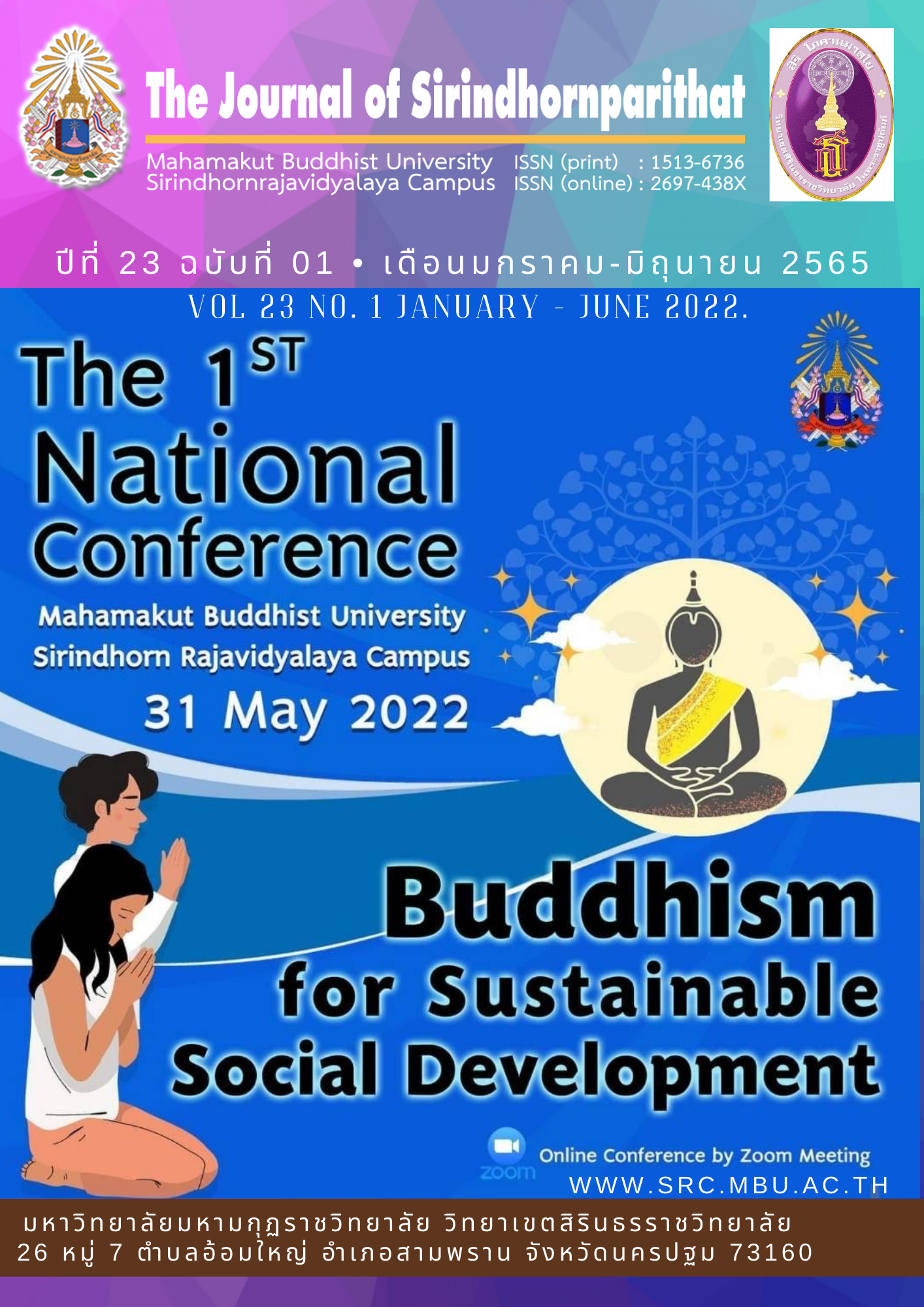Instructional Leadership Roles of School Principal
Keywords:
Instructional leadership, school principalAbstract
<p>ความเป็นผู้นำในการสอนของครูใหญ่มีผลอย่างมากต่อผลลัพธ์ของนักเรียนมากกว่าความเป็นผู้นำประเภทอื่นๆ ความเป็นผู้นำด้านการสอนถือได้ว่าเป็นปัจจัยสำคัญในการเรียนรู้ของนักเรียนและทำให้โรงเรียนมีคุณภาพมากขึ้น หน้าที่ของผู้นำการสอนที่เกี่ยวข้องกับกิจกรรมการเรียนการสอนของผู้อำนวยการโรงเรียน แต่ละรุ่นมีขนาดและฟังก์ชันสำหรับหลักการ’ การปฏิบัติหรือการแสดงออก องค์ประกอบของภาวะผู้นำทางการเรียนการสอนและข้อเสนอแนะแนวทางการพัฒนาผู้บริหารสถานศึกษาให้มีภาวะผู้นำทางการเรียนการสอนที่สูงขึ้น</p>
References
สถาบันพัฒนาข้าราชการพลเรือน. (ม.ป.ป.). คู่มือการจัดทำแผนพัฒนารายบุคคล (Individual Development Plan: IDP). สำหรับโครงการฝึกอบรมเสริมสูตรนักบริหารระดับสูง (ส.นบส.)ประจำปีงบประมาณ พ.ศ. 2560 รุ่นที่ 10 สำนักงาน ก.พ. ม.ป.ท.
สำนักสร้างการเปลี่ยนแปลง. (2559). สถานการณ์ปัญหาคุณภาพการศึกษาไทย. จาก https://www.school of change makers.com/sites/default/files/cf74299184c74ef69c8d967.jpg.
Alig-Mielcarek, J. M. (2003). A model of school success: Instructional leadership, academic press and student schievement (Doctoral dissertation). Retrieved from https://etd.ohiolink.edu/!etd.send_file?accession=osu1054144000&disposition=inline.
Barth, R. (1990). Improving schools from within: Teachers, parents and principals can make a difference. San Francisco: Jossey-Bass Publishers.
Edmonds, R. (1979) Effective schools for the urban poor. Educational Leadership, 37, 15–27.
Hallinger, P. (2005). Instructional Leadership and the School Principal: A Passing Fancy that Refused to Fade Away, Leadership and Policy in school. 4(3), 221-239.
Hallinger, P. (2011a). A review of three of three decades of doctoral studies using the principal instructional management rating scale:A lens on methodological progress in educational leadership. Educational Administration Quarterly, 47(2), 271-306.
Hallinger, P., Bickman, L., & Davis, K. (1996). School context, principal leadership, and student reading achievement. Elementary School Journal, 96(5), 527-549.
Hallinger, P. & Heck, R. H. (1996). Reassessing the principal’s role in school effectiveness:1980-1995. Educational Administration Quarterly, 32(1), 5-44.
Hallinger, P., & Murphy, J. (1985). Assessing the instructional management behavior of principals. Elementary School Journal, 86(2), 217-247.
Heck, R. H., Marcoulides, G.A., & Lang, P. (1991). Principal instructional leadership and school achievement: The application of discriminant techniques. School Effectiveness & School Improvement, 2,115-135. Doi:10.1080/092435910020204.
Locke, E. & Latham, G. (1990). A theory of goal setting and task performance. Englewood Cliffs: NJ: Prentice Hall.
McEwan, K. (2003). 7 Steps to Effective Instructional Leadership. California: Corwin Press.
Murphy. J. (1990). Principal instructional leadership. Advances in Educational Administration, 1 (B: Changing perspectives on the school), 163-200.
Purkey, S. & Smith, M. (1983). Effective schools: A review. The Elementary School Journal, 83(4), 427-452.
Stoll, L. Seashore Louis, K. (Eds.2007). Professional learning communities: Divergence, depth and dilemmas. Berkshire, (Eds, 2004) England: Open University Press.
Stronge, J.H. (1988). A position in transition? Principal. 67(5), 32-33.
Stronge, J.H, Richard, H.B & Catano, Nancy, (2008). Qualities of effective principals. Retrived from http://www.ascd.org/publications/books/108003/chapters/Instructional-Leadership@-Supporting-Best-Practice.aspx.
Teddlie, C. & Stringfield, S. (1993). Schools make a difference: Lessons learned from a 10-year study of school effects. New York. Teachers College Press.
Weber, J. (1996). Leading the instructional program. In S. Smith. & P. Piele(Eds.), School leadership. (pp.253-278). Clearinghouse of Educational Management. Eugene, Oregon.
Wells, G.A. (1993). Instructional management behavior, time management, and selected background variables of elementary school principals in Connecticut’s urban school districts (Doctors dissertation). Retrieved from http://search.proquest.com/results/4B2F971 ED4BB47AEPQ/false? Accounted=168828.

Downloads
Published
Issue
Section
License
Copyright (c) 2022 Mahamakut Buddhist University

This work is licensed under a Creative Commons Attribution-NonCommercial-NoDerivatives 4.0 International License.
บทความที่ได้รับการตีพิมพ์เป็นลิขสิทธิ์ของ มหาวิทยาลัยมหามกุฏราชวิทยาลัย วิทยาเขตสิรินธรราชวิทยาลัย
ข้อความที่ปรากฏในบทความแต่ละเรื่องในวารสารวิชาการเล่มนี้เป็นความคิดเห็นส่วนตัวของผู้เขียนแต่ละท่านไม่เกี่ยวข้องกับหาวิทยาลัยมหามกุฏราชวิทยาลัย วิทยาเขตสิรินธรราชวิทยาลัย และคณาจารย์ท่านอื่นๆในมหาวิทยาลัยฯ แต่อย่างใด ความรับผิดชอบองค์ประกอบทั้งหมดของบทความแต่ละเรื่องเป็นของผู้เขียนแต่ละท่าน หากมีความผิดพลาดใดๆ ผู้เขียนแต่ละท่านจะรับผิดชอบบทความของตนเองแต่ผู้เดียว



